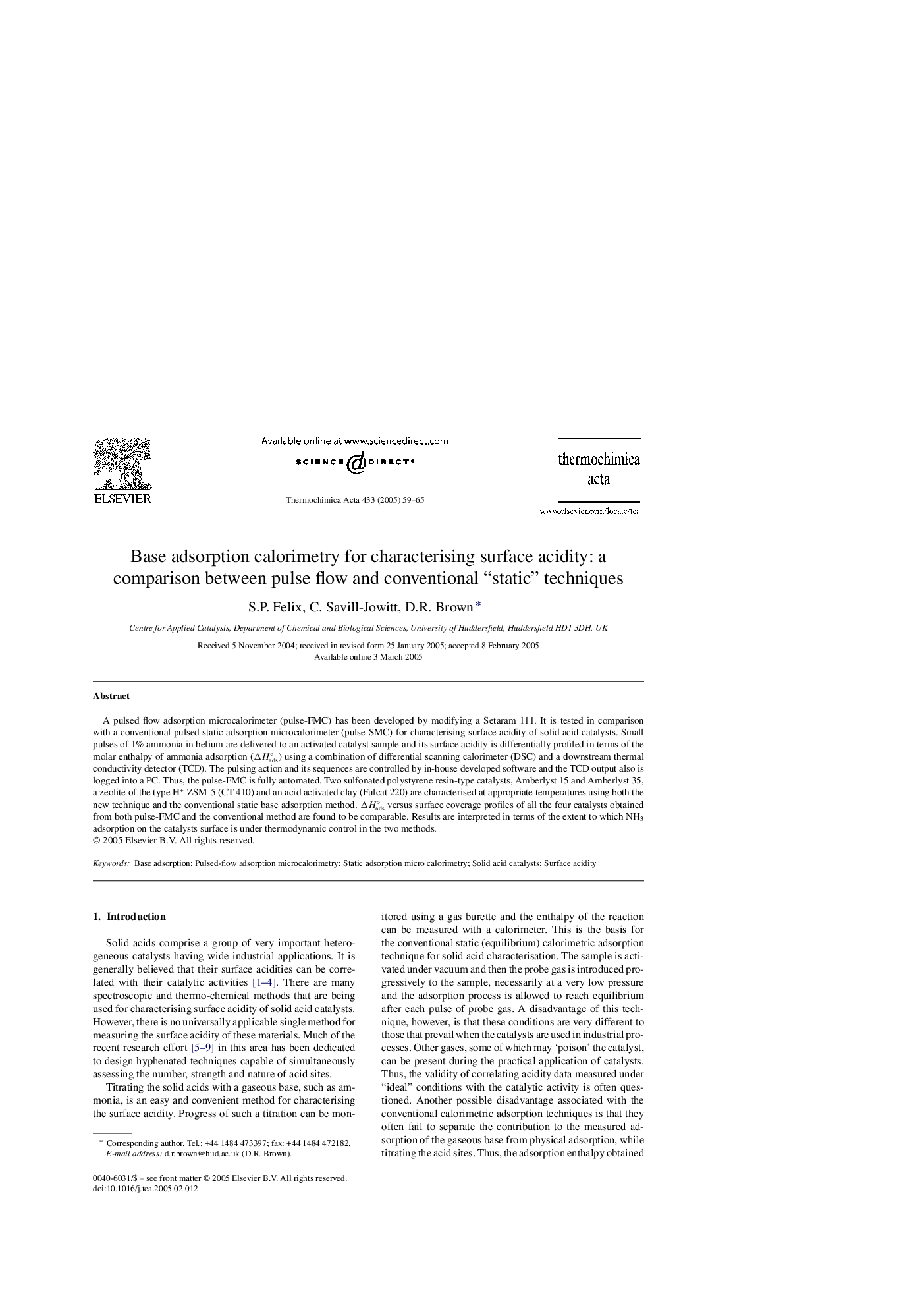| کد مقاله | کد نشریه | سال انتشار | مقاله انگلیسی | نسخه تمام متن |
|---|---|---|---|---|
| 9694050 | 1459638 | 2005 | 7 صفحه PDF | دانلود رایگان |
عنوان انگلیسی مقاله ISI
Base adsorption calorimetry for characterising surface acidity: a comparison between pulse flow and conventional “static” techniques
دانلود مقاله + سفارش ترجمه
دانلود مقاله ISI انگلیسی
رایگان برای ایرانیان
موضوعات مرتبط
مهندسی و علوم پایه
مهندسی شیمی
جریان سیال و فرایندهای انتقال
پیش نمایش صفحه اول مقاله

چکیده انگلیسی
A pulsed flow adsorption microcalorimeter (pulse-FMC) has been developed by modifying a Setaram 111. It is tested in comparison with a conventional pulsed static adsorption microcalorimeter (pulse-SMC) for characterising surface acidity of solid acid catalysts. Small pulses of 1% ammonia in helium are delivered to an activated catalyst sample and its surface acidity is differentially profiled in terms of the molar enthalpy of ammonia adsorption (ÎHads°) using a combination of differential scanning calorimeter (DSC) and a downstream thermal conductivity detector (TCD). The pulsing action and its sequences are controlled by in-house developed software and the TCD output also is logged into a PC. Thus, the pulse-FMC is fully automated. Two sulfonated polystyrene resin-type catalysts, Amberlyst 15 and Amberlyst 35, a zeolite of the type H+-ZSM-5 (CT 410) and an acid activated clay (Fulcat 220) are characterised at appropriate temperatures using both the new technique and the conventional static base adsorption method. ÎHads° versus surface coverage profiles of all the four catalysts obtained from both pulse-FMC and the conventional method are found to be comparable. Results are interpreted in terms of the extent to which NH3 adsorption on the catalysts surface is under thermodynamic control in the two methods.
ناشر
Database: Elsevier - ScienceDirect (ساینس دایرکت)
Journal: Thermochimica Acta - Volume 433, Issues 1â2, 1 August 2005, Pages 59-65
Journal: Thermochimica Acta - Volume 433, Issues 1â2, 1 August 2005, Pages 59-65
نویسندگان
S.P. Felix, C. Savill-Jowitt, D.R. Brown,